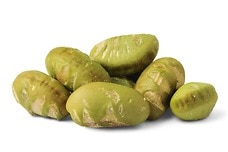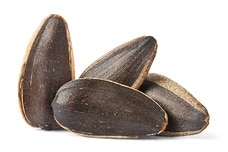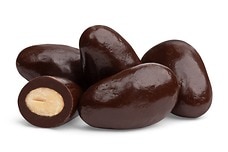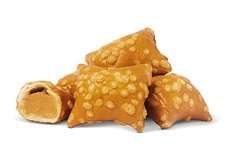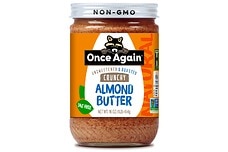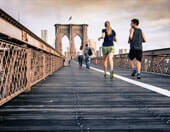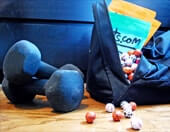High-Protein Foods: Suggestions, Snacks & Recipes
One of the things that makes protein unique when compared to the other macronutrients is that the body can’t store proteins the same way that it can store fat and carbohydrates. This means that it is essential to have adequate protein intake every day (U.S. National Library of Medicine, 2015).
But how much protein is "adequate" for the average person?
Well, the Recommended Dietary Allowance (RDA) for protein is 0.8 grams of protein per kilogram of body weight (Pendick, 2015). So, a person weighing 160 pounds, for example, would need 58 grams of protein each day.
While getting enough protein is essential to your bodily functioning, adding more protein to an already balanced diet has its advantages. For example, protein can contribute to your efforts to build muscle.
During an intense workout, muscles undergo microscopic damage. Proteins provide the raw material necessary for constructing additional muscle fibers and rebuilding broken fibers with a thicker constitution- amounting to greater muscular strength and endurance (Schoenfeld, 2010).
Healthy Sources of Dietary Protein
Those seeking to build muscles need to consume more protein than the standard RDA for their weight in order to facilitate the construction of these new and improved muscle fibers.
This being said, we've all found ourselves gorging on high-protein foods like steak or meatloaf to "bulk" only to find ourselves weighed down and unable to keep up with our regular exercise routine. So, then, how can we add protein to our diet without having to worry about its preceived ill effects?
Getting protein from lean, non-animal sources can preserve muscle tissue and help you maintain a healthy weight (Pendick, 2015). When choosing proteins to add to your diet, the type of protein matters. Animal products are high in protein, but they can also have high amounts of saturated or trans fats.
The following list includes only foods that offer protein amidst an overall healthy nutrient profile. Pairing these protein sources with fiber-filled foods, like fruits and vegetables, and healthy starches, such as quinoa or oats, can keep your diet balanced and healthy.

Lean meats
Three ounces of lean meat typically counts as a serving of protein. Some examples of lean meat include ("Nutritional information for meat", n.d.):
For 3 oz (85 g) servings:
- Skinless chicken breasts — 27.2 g protein, 139 calories
- Turkey — 14.4 g protein, 89 calories
- Lean beef — 25.8 g protein, 158 calories
- Lean pork — 22.2 g protein, 122 calories
Fish
In addition to providing protein, fatty fish are also good sources of omega-3 fatty acids, which improves cardiovascular health. Examples of popular fatty fish include (U.S. Food & Drug Administration, 2008):
For 3 oz (84 g) servings:
- Cod — 20 g protein, 90 calories
- Tuna — 26 g protein, 130 calories
- Salmon (wild) — 24 g protein, 200 calories
- Tilapia — 22 g protein, 110 calories
- Halibut — 23 g protein, 120 calories
Eggs
Eggs are complete proteins, giving you all 9 essential amino acids. They're also a source of selenium, vitamin D, B-vitamins, zinc, iron, and choline. One large grade A egg (53 g) contains 6 grams of protein and 70 calories. (Egg Farmers of Canada, n.d.; United States Department of Agriculture, 2016; National Institutes of Health, 2016).
Nuts & Seeds
Many nuts and seeds are valuable sources of protein, particularly for vegans and vegetarians. Nuts and seeds that offer heart-healthy omega-3 fatty acids, vitamins, and minerals include:
For 1 oz servings (~28 g):
- Almonds — 6.4 g protein, 155 calories
- Peanuts — 7 g protein, 160 calories
- Pistachios — 5.5 g protein, 155 calories
- Pecans — 2.7 g protein, 195 calories
- Sunflower seeds — 6.4 g protein, 173 calories
- Pepitas — 9 g protein, 180 calories
- Flaxseeds — 5 g protein, 150 calories
Beans
Beans and legumes are also sources of protein. Combining most beans with rice supplies a sufficient variety of amino acids to meet your dietary needs. Some legumes that make for great dishes include:
For 1 oz servings (~28 g):
- Chickpeas — 4.5 g protein, 109 calories
- Black beans — 6.9 g protein, 54 calories
- Kidney beans — 6.9 g protein, 54 calories
- Split peas — 2.5 g protein, 106 calories
- Pinto beans — 5.4 g protein, 46 calories
Soy Products
Tofu and tempeh are great non-animal protein sources. They can be added to nearly any meal for a healthy protein boost without the saturated fat found in animal proteins. We also carry soy protein powder to add to your smoothies and shakes.
- Tofu (serving size ½ cup, 126 g) — 10 g protein, 88 calories
- Tempeh (serving size 1 cup, 166 g) — 31 g protein, 320 calories ("SELF Nutrition Data: Know What You Eat", n.d.)
- Soy Protein Powder (serving size ~1 oz, 32.5 g) — 25 g protein, 100 calories
Dairy Products
Dairy products make great snacks, ingredients or side dishes and are rich in a variety of amino acids. Opt for lowfat or nonfat versions of these dairy products to limit your saturated fat consumption.
- Milk, 1% fat (serving size 1 cup, 244 g) — 8 g protein, 103 calories ("SELF Nutrition Data: Know What You Eat", n.d.)
- Cheese, Mozarella (serving size 1 oz, 27.5 g) — 14.2 g protein, 144 calories
- Yogurt, skim milk (serving size 1 cup, 245 g) — 14 g protein, 137 calories ("SELF Nutrition Data: Know What You Eat", n.d.)
Considerations for Those with Medical Conditions or Special Diets

Protein deficiency can particularly pose a problem for strict vegetarians, people with eating disorders such as anorexia nervosa, and those with gastrointestinal problems such as Crohn’s disease or ulcerative colitis. These groups of people must be particularly vigilant that they get enough protein in their diets and protein from a variety of sources.
It is important to get protein from different sources, particularly for vegetarians and vegans, because of the composition of different proteins and their contributions to the body. Proteins are composed of building blocks known as amino acids. The body breaks down dietary proteins into these building blocks before rearranging them to create structures needed for a wide variety of essential functions throughout the body.
Dietary proteins are placed into two categories: complete and incomplete proteins. Of the twenty amino acids that our bodies need, only nine cannot be synthesized by the body and must be obtained via the diet; these amino acids are considered essential. A complete protein is one that contains all nine essential amino acids (National Research Council US Subcommittee on the Tenth Edition of the Recommended Dietary Allowances, 1989).
Many animal proteins, such as red meat, poultry, fish, eggs, and dairy products, are complete proteins, though there are also non-animal complete proteins, including quinoa, soy, sprouted grain bread, and buckwheat. Fortunately for vegetarians, it is also possible to eat complementary incomplete proteins that provide the full nine amino acids your body needs.
For example, eating legumes with nuts and seeds provides all of the essential amino acids. Similarly, legumes and grains (e.g. brown rice) are considered complementary proteins. It is not essential to eat these foods together at the same meal; as long as you get several complementary forms of incomplete protein throughout the day, you will get the amino acids you need.
When your body does not get enough protein, things begin to go awry. Muscle fatigue or a drop in muscle strength may be signs you’re not eating enough protein (National Institutes of Health, 2008). Additionally, be watchful for symptoms such as brain fogginess, confusion, weakness, poor immune system functioning, and hair falling out (Tedesco, 2014). These are all possible signs of protein deficiency that should go away once you begin getting enough protein again.
Protein-Rich Recipes
Build muscle and support your cellular health with the delicious dishes below. For more recipes and snacks that are packed with protein, check out our article on high-protein snacks!
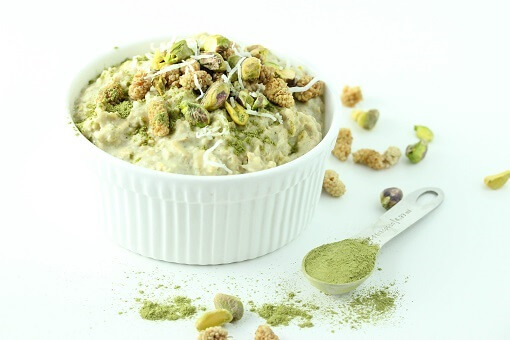
Moringa Oatmeal Recipe
Start your day with a filling plate that’s packed with protein. Each bowl of this classic breakfast dish offers 13.5 grams of protein and a pleasant palate of pistachio.
Ingredients: Gluten-free rolled oats, almond milk, agave or maple syrup, vanilla extract, moringa powder, pistachios, dried mulberries, unsweetened shredded coconut, chia seeds.
Total Time: 10 minutes
| Yield: 4 servings
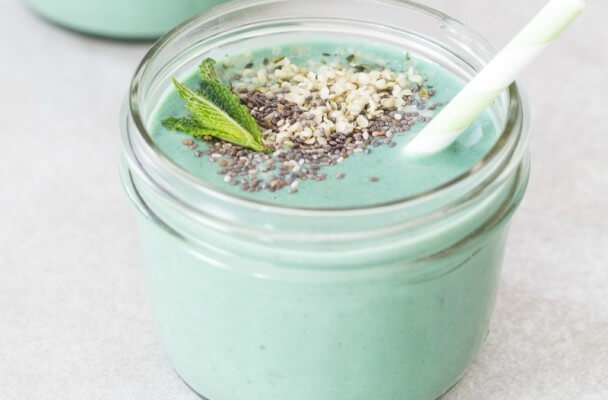
Protein-Packed Detox Smoothie Recipe {vegan}
If you’re hoping for a post-workout shake to replenish your reserves, the 19 grams of protein in this blended beverage are sure to help! For vegetarians, this vegan recipe also offers an abundance of essential minerals your diet may be missing!
Ingredients: Almond milk, frozen banana, spirulina, hemp protein powder (optional), fresh mint, chia seeds, hemp hearts.
Total Time: 5 minutes
| Yield: 2 servings
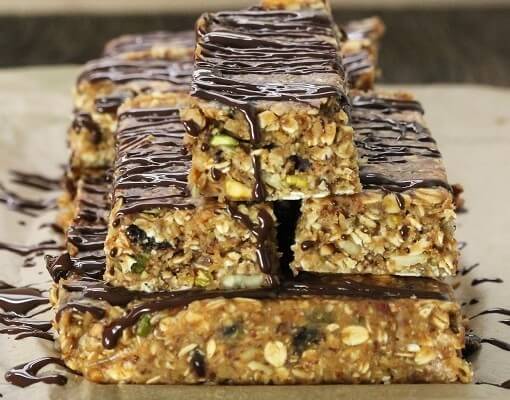
No-Bake Granola Bars Recipe {gluten-free, vegan}
A perfect snack for anytime, these scrumptious bars offer nearly 14 grams of protein per serving and are also a rich source of fiber. With a blend of complex carbohydrates and protein, these bars serve as another idyllic snack to enjoy after your workout!
Ingredients: Gluten-free rolled oats, peanut butter, dried tart cherries, pistachios, flaxseed meal, walnuts, pumpkin seeds, sunflower seeds, agave syrup. unsweetened applesauce, melted cacao nibs or dark chocolate.
Total Time: 15 minutes
| Yield: 8 - 10 servings
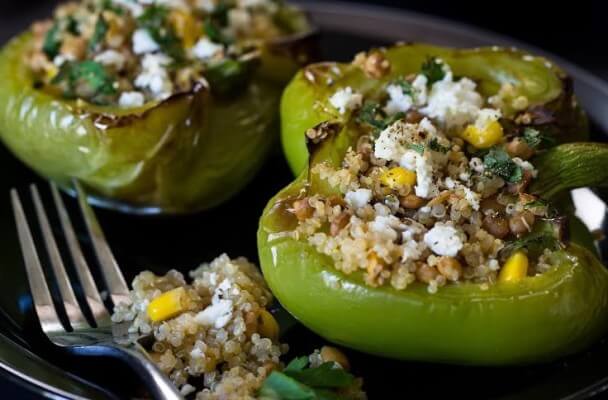
Quinoa Stuffed Peppers Recipe {gluten-free}
A simple dinner recipes that is ideal for parties, these stuffed peppers are packed with protein without the use of meat, offering an impressive 30 grams with each delectable serving.
Ingredients: Quinoa, green bell peppers, canned lentils, fresh spinach, feta cheese, frozen corn (thawed), salt, black pepper.
Total Time: 40 minutes
| Yield: 6 servings (8 half-peppers)
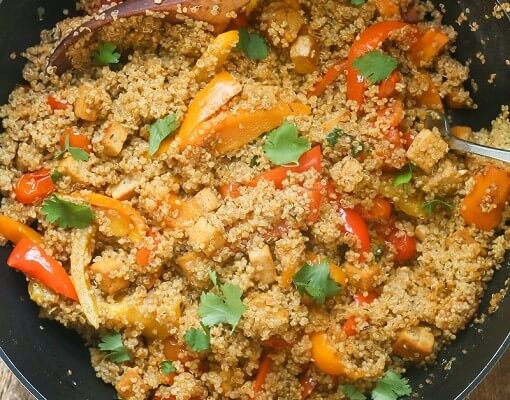
Veggie Quinoa Casserole Recipe {gluten-free, vegan}
This scrumptious dish delivers nigh 18 grams of protein in a vegan dinner that is nutritionally balanced with essential vitamins and minerals. For additional protein, meat-eaters can also substitute a lean protein like chicken breast for tofu.
Ingredients: Quinoa, extra firm tofu, bell peppers, cherry tomatoes, olive oil, paprika, cumin, oregano, thyme, salt.
Total Time: 35 minutes
| Yield: 4 - 5 servings
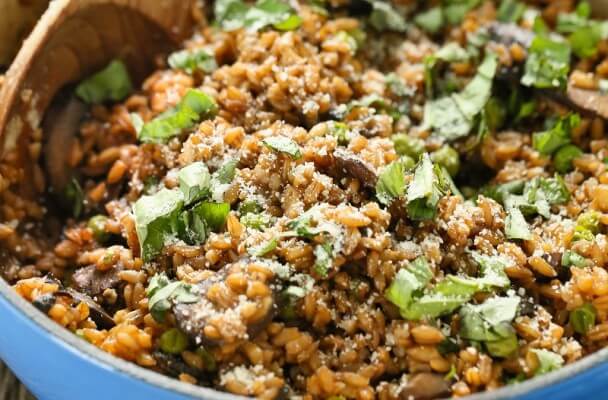
Farro Risotto with Mushrooms Recipe
Another dinner plate, this risotto provides 19 grams of protein and an abundance of fiber, iron, and complex carbohydrates. For another delicious vegetarian dish, try this recipe today!
Ingredients: Organic pearled farro, sliced mushrooms, garlic cloves, extra virgin olive oil, frozen peas, salt, fresh basil, parmesan cheese, hot water.
Total Time: 1 hour, 15 minutes
| Yield: 6 servings
Protein-Rich Snacks
Eating enough protein during the day can happen with ease. One great way to ensure your snacks also supply a portion of protein that can help make the difference in your diet.
Healthy Eating
- Healthy Snacks
- Healthy Highlights
- 5 Uses for Cacao Powder
- 5 Ways to Eat Farro
- 6 Best Gluten-Free Foods
- Alcohol and the Body
- Almond Flour Recipes
- Anti-Aging Superfoods
- Beat the Afternoon Slump
- Benefits of a Plant-Based Diet
- Benefits of Baobab
- Benefits of Cashews
- Benefits of Coconut Oil for Hair
- Benefits of Coconuts
- Benefits of Dates
- Benefits of Fenugreek
- Benefits of Garcinia Cambogia
- Benefits of Goji Berries
- Benefits of Kale Chips
- Benefits of Monk Fruit Sweetener
- Benefits of Peanuts
- Benefits of Pecans
- Benefits of Pistachios
- Benefits of Pumpkin Seeds
- Benefits of Spelt Flour
- Benefits of Steel Cut Oats
- Benefits of Sunflower Seeds
- Benefits of Tiger Nuts
- Benefits of Turmeric
- Benefits of Walnuts
- Benefits of Wheatgrass
- Best Food Fads
- Cacao vs Cocoa
- Caffeine-Free Energy Foods
- Chocolate That's Good for You
- Diet vs. Exercise
- Fat Burning Foods
- Food Myths Debunked
- Foods for Bone Density
- Foods for Colon Health
- Foods for Healthy Hair
- Foods for Healthy Skin
- Foods to Help Sleep
- Foods to Reduce Stress
- Green Tea Benefits
- Healthy Baking Flours
- Heart Healthy Habits
- High Protein Health Risks
- How to Boost Your Metabolism
- How to Lose Weight While Aging
- How to Throw a Vegan BBQ
- Kaniwa vs Quinoa
- Little Health Foods
- Low-Carb: Fad or Friend?
- Making Healthier Desserts
- Mediterranean Diet Meal Plan
- Natural Beauty Products
- Nuts for Weight Loss
- Preparing Vegan Meals
- Preventing Muscle Degeneration
- Rare Superfoods
- Reduce Sugar Intake
- Save Time By Going Vegan
- Smarter Snack Swaps
- Smoothie Ingredients
- Soy Protein vs Whey Protein
- Starting a Plant-Based Diet
- Steel Cut vs Rolled Oats
- Sugar Substitutes
- Vegan Proteins
- Vegan Substitutions for Fall Recipes
- Why Go Vegan
- Healthy Meals
- Healthy Recipes
- Nutrition and Special Diets
- 21 Day Fix
- 5 Popular Diet Similarities
- Alkaline Diet
- Anti-Inflammatory Diet
- Calorie Counting
- Carb Cycling Diet
- Celiac Disease
- Cholesterol
- Clean Eating
- Crohn's Disease
- DASH Diet
- Detox Diet
- Diabetes
- Diabetes Diet
- Diet Pill Dangers
- Fat Burning Foods
- Gluten-free Diet
- Glycemic Index
- Heart Health
- High Blood Pressure Diet
- High Fiber Foods
- How to Eat Healthy
- How to Lower Blood Pressure
- Hypertension
- IBS Diet
- Ketogenic Diet
- Liquid Diet
- Low GI Foods
- Low-Carb Diet and Foods
- Low-Fat High-Carb Diet
- Mediterranean Diet
- Mediterranean Diet Foods
- Military Diet
- Nutrition Labels Explained
- Paleo Diet
- Raw Food Diet
- Superfoods
- Sustainable Weight Loss
- Thrive Diet
- Vegan Diet
- Vegetarian Diet
- Weight Loss Shakes
- Whole30
- Vitamins, Minerals & Nutrients


